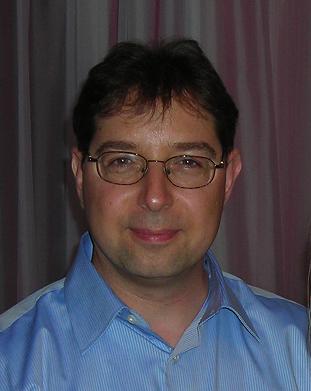- Detecting Gyroscopic Thrust (2012) [Updated 1 decade ago]
- Tired Light and Type Ia Supernovae Observations (2012) [Updated 1 decade ago]
- Measurements of Variations in the Direction of Light Beam (2004) [Updated 7 years ago]
- Detecting Gyroscopic Thrust (2012) [Updated 1 decade ago]
This paper describes a simple experiment on detecting gyroscopic thrust demonstrated by Prof. Eric Laithwaite in 1974. In this experiment the gyroscope suspended on the line by one end of its rotation axis was deflecting from the pivot point during precession. In addition to the original setup the author has isolated the gyroscope from surrounding air and conducted a video recording of the experiment from two positions simultaneously. The recording of gyroscope position and orientation allowed author to determine the trajectory of the gyroscope and analyze deflection dependency on gyroscope orientation. The results of this analysis indicate the existence of the external force acting on the gyroscope and causing the increase or decrease in linear momentum. It is suggested that the force is a result of the difference in aether pressure in front and at the back of the gyroscope rotor.
- Tired Light and Type Ia Supernovae Observations (2012) [Updated 1 decade ago]
The phenomenon known as ?supernova timescale stretching? was discovered by measuring the observed light curve broadening and by measuring the rate of spectra evolution (aging) for Type Ia supernovae. In modern cosmology this phenomenon is widely considered as one that rules out the ?tired light? hypothesis. The redefined ?tired light? hypothesis presented in this paper not only agrees with the supernova timescale stretching but actually explains it without employing universe expansion. Using Type Ia supernova spectra template, I have conducted a computer simulation study of light propagation from a supernova to an observer based on the tired light assumptions. The results of the simulation for ?at rest? UBVRIYJHK bands do not contradict the astronomical observations related to light curve broadening and spectra aging.
- Measurements of Variations in the Direction of Light Beam (2004) [Updated 7 years ago]
Periodical (-20"..0") and random (-46"..+15") deflections of the light beam relative to the Earth surface were measured on the distance of 1.52 m during 109 days. The systematic non-refractional deflection of light beam down to the center of the Earth with average value of 11" .6 was discovered. The atmospheric refraction coefficient k was considered to be stable and equal to 0.140.05. The absolute optical gravimeter was suggested for the forecast of major earthquakes. It was determined that the Moon phases have impact on long-period deflections with two days lag.


